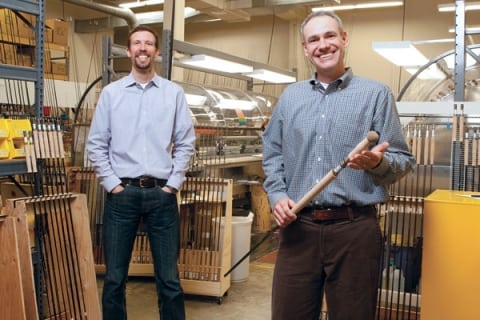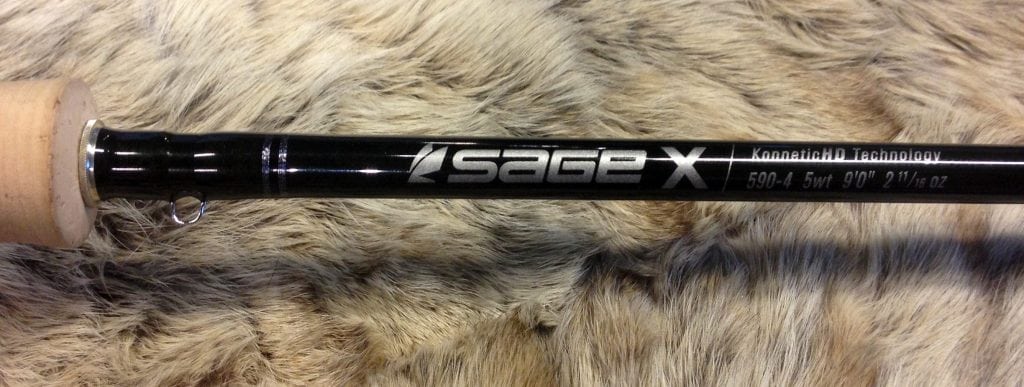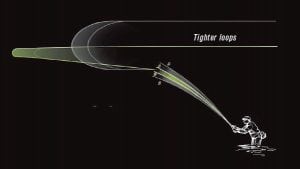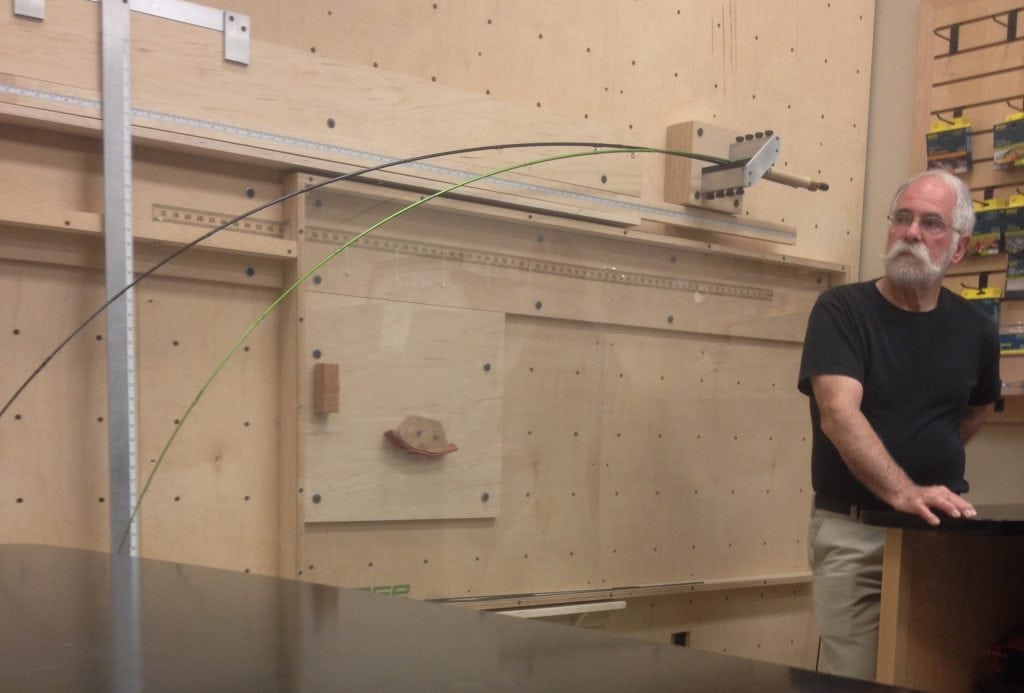THE SAGE X FLY ROD REVIEW – by Matt Sharp
A Fly Rod with Soul and Maybe Some Kool-Aid
Last month when I got a call from Sage Fly Fishing I thought they were just checking in. I was a little taken aback when they told me that they needed me on a plane to attend an all expenses paid Sage factory tour in Bainbridge Island. At first I wasn’t sold. With a busy guiding, ordering and fishing course schedule, getting away is hard. I had seen the Sage factory before but when they told me they had a “Big Announcement” where 50 of the top retailers, magazine editors and bloggers were coming from across North America, my interest was piqued. When they told me there was a full day of guided fishing on the famous Yakima River I realized that I couldn’t say no.
A week later I was flying to Seattle. Yes, I live in Vancouver and driving the 2 hours would have been just as fast but Sage was pulling out all the stops and it was nice for a fly fishing company to take things seriously.
For the weekend, taking things seriously was a re-occurring theme. From the loyal employees working the production line, all the way up to management, the one major thing I took away from the trip was Sage’s dedication to make “Special Fly Rods”.
On the first day of the tour they held off on the “Big Announcement” but they walked us through a number of seminars on products and technologies. It was an amazing opportunity to hear from the designers. We talked about their theories of design, on cutting edge materials and industry trends. Then we watched the production teams build rods, taking the utmost care to get every wrap right and every bank perfectly rolled. Though I am not supposed to talk about it in too much detail, they showed us machines that handle the raw graphite materials with a level of precision and repeat-ability that is not matched by any other company in the market.
Now for Sage to say that we have the “best rod building machines in the industry” is all fine and dandy. It makes for a great sales pitch on a company website or product catalog but I have toured other rod manufacturing facilities and what I saw is not just a sales pitch. I saw massive hundred thousand dollar machines that Sage uses that I have not seen anywhere else. These machines will not design a great long casting fly rod but they will give Sage a level of tolerance that is not seen on the market. With this precision they can push materials right to the limit of their capabilities and still offer a level of consistency that you simply wont see from other manufactures.
Now this leads us to research and development. With the world of fly rods ever growing and lots of companies pushing the limits of performance, it is sometime hard to tell the difference between high-end rods.
To make a truly great fly rod you need three things. Great materials, great manufacturing processes and great minds. At it’s core, combining these three factors is an art. So how does sage make sure they are on the cutting edge in all three categories?
For materials sage is absolutely the leader in the industry. Their testing facility (I was not allowed to take pictures) is heaven for fly rod enthusiasts. The Sage machines used to test strength and flexing properties have become an industry standard. What I mean by this is every graphite material company looking to market their material to the fishing rod industry comes to Sage first. Why would other companies come to Sage? No one else has the tools to test the materials with such precision and give feedback. Many cutting edge materials used in the competitor’s rods were first tested and in many cases rejected by the Sage research and development team.
Now back to the sales pitch or what I call the “Kool-Aid”. What I mean by “Kool-Aid” is that when you are on an all expenses paid trip you are bound to develop some biases and I am sure many of you who have “favourite” rods from other manufacturers are rolling your eyes and saying here we go with another “Sage is the Best” article.
I will endeavor to keep this article as non-bias as possible and you are absolutely right. In the fly rod world, Sage is not the “best” there is no such thing as the “best” no matter how many shootouts a rod wins or followers love a rod line, you will find great casters who love the exact opposite properties in a rod deemed the “worst” in such shootouts, competitions, blog posts, and forum threads.
Again, I ask the question why? Well it comes down to the art. Fly fishing walks a very precarious line between sports performance, art and the simple need to have fun fishing. With every angler using varying degrees of athletic ability, artful creativity, and that “get out and just have fun” attitude, telling someone what is the “best” rod is impossible.
Now what I can talk about is bad rods – bad rods made of poor materials where the vibrations and flex are simply difficult to cast. Bad rods with poor tolerances that break and have no consistency. Bad rods designed by people who either missed the mark or simply don’t get the art of fly fishing. Lastly the bad rods with no soul where art and science has gotten crossed wires and the rod is simply no fun to cast.
I own a ton of fly rods, 30 rods and counting. I have favourite rods for many different fishing applications and I have a couple rods that I regret buying and hate to cast. I love a couple G. Loomis Rods. There is a TFO rod or two that can cast a line out of the park; Beulah, Miser and Burkheimer have a few winners in my quiver and even the cost effective Redington line has a couple rods that are close to my heart. But over the 30 plus rods in my arsenal Sage makes up 6-7 of the top ten rods and the one thing you can know for sure when buying a Sage rod is that it will not miss on the quality of materials, performance, or tolerances. Sometimes they have not clicked on the “art” level or what I call the “soul level” but they are never too far off the mark.
This leads us to the “BIG ANNOUNCEMENT” after the tour and one hell of a party Sage drove us down to Red’s Fly Shop on the Yakima River. All I can say is WOW! If you have never been down to the Yakima River, it is worth it. You drive from Seattle’s coastal rain forests and within 3 hours you are in a canyon laced desert. The Yakima itself is a very cool river and Red’s Fly Shop (yes, I am going to promote a competitor) is a very cool fly shop attached to one of the nicest riverside lodges I have had the pleasure to stay at. Now I wont lie, I wouldn’t travel around the world specifically to fish the Yakima River but if I was passing through the area or just wanted to check out a very cool spot I would fully recommend it.
Ok, back to the “Big Announcement”. After we settled in at Red’s they sat everyone down and with drums in the background they announced that they were coming out with a new flagship Sage fly rod, the Sage X.
Before everyone forms their opinions on the name, X stands for 10. It is there 10th line of flagship rods. I think the name is fitting.
Now there is going to be a ton of press on this rod over the next few months. Sage’s claims are big and I want to be impartial in this review. So I will first lay out what they claim and then I will talk about my experiences and observations.
They claim that is it much stronger per weight. They claim that it’s tracking is tighter on a horizontal flexing axis and a vertical flexing axis resulting in tighter more accurate loops. Lastly they claim that it recovers faster than other materials or rods on the markets. (not stiffer let’s be clear about that)
How did they do it? With Kinetic HD technology. They took the same concepts of the Sage One and made the graphite resonate at a higher frequency. You can literally hear it if you click the graphite against a sounding block. This higher frequency means a couple things for casting. The graphite recovers faster from load and it can be built lighter (less material for a given desired strength) and it also tracks better side to side and up and down (less wobble)
The Sage R & D team showed us rods bending, rods breaking, and microscope images of graphite fibers stacked closer together than any other rod on the market but this was the sales pitch and I am not a materials engineer. Casting and fishing is where I feel a little more comfortable, so let’s talk the fishing.
I have now fished the Sage X for 4 full days of real fishing and have been playing with it between teaching casting lessons on the park for the last month. I have also been able to sneak it into the hands of a number of my clients and students and observed how they reacted to the new rod.
I would describe the Sage X as “softer” than the Sage One but the recovery is surprising. I have heard a few experts debate this “softness”. Some say it is stiffer but what I have found is that is easier to bend the tip of this rod without loosing feeling in the butt section. Simply put I would debate that it recovers faster than the Sage One but flexes deeper. It also has almost no vibration or wobble.
I have fished the Sage One a ton. I own a 4-5-7-9 and 12 plus Spey rods so I know this series well and love them but sometimes they can almost bite you in the hand if you are not smooth or you are working too hard. This “bite” has also been apparent when casting the NRX, BVK, Method and a couple other flagship fast action rods.
On the very first day with the X it did everything I asked of it in distance, accuracy and feel. In the park I cast it against the Sage One, GLX, BVK and a couple lower end rods. I still love these rods but the X had more “soul”. I found it easier to “Feel” without sacrificing any power. I have had the chance to put it into a number of beginner’s hands. In this very un scientific arena the Sage Accel, G Loomis GLX and Redington’s deeper bending rods are still the easiest for first day beginners to handle but for a few of the more athletic casters the X started to click. This very rarely happened with fast rods from other manufactures and sage rods of the past. I will still recommend overloading it for very new casters but I have less reservation when recommending The Sage X to beginner or intermediate casters.
In the past when a rod is easier for intermediate casters it usually sacrifices distance and accuracy in the top end performance. When I personally put the Sage X through it’s paces on the casting pond it didn’t blink. In the 90 -110 distance tests it met or surpassed the competition. In the 60-80ft accuracy tests it kicked butt. I found my arms more relaxed on these casts and the results were measurably more consistent. Again this is not a scientific comparison. Over the next few months of practice I will learn more and get a better feel for the rod but the initial tests are very promising.
For the record the Sage One has been my distance to accuracy champ over a number of top rods for the past 2 years and just because I know it well I would probably stick with the Sage One or step into the Sage Method for a no holds barred distance competition but if I were trying to win a long or short accuracy competition I think I would choose the X. Not only is it more accurate but it is debatably more relaxing to cast at all distances.
In other specs the Sage X is lighter but when looking at light rods it is very hard to tell the differences when we are measuring decimal points on an ounce, so let’s leave the actual weight out of it. The other thing that am I excited to see is the durability of this rod. If Sage’s claim of improved strength holds up in real world applications this will be a very special rod. Compared to the competition we have not see an alarming number of Sage Ones coming back into the shop for warranty but we have seen more than I would like. Any gains in this department are a win. In concept the tighter fibers/higher resonance should mean better durably.
So in a re-cap: I have probably developed a little bias from the great treatment we received from the Sage team. Yes I am drinking the Kool-Aid and it tastes good! More importantly it casts well. All joking aside I can’t stress enough how impressed we all were with Sage’s dedication to craftsmanship and advancing rod technology. I am very excited about the new series of rods. If you like fast rods but didn’t like the Sage One because it was too stiff or didn’t “feel right” you might want to revisit the Sage flagship line. For guys who liked the Sage One you should gain noticeable accuracy without sacrificing any distance and at the same time you will be able to relax a little bit more in the stroke.
If you want to see the new X series rod we will have a 5wt in the store to see and wiggle – as long as I am not out fishing it. So call ahead to make sure I am not on the water.
This rod will be shipping at the end of the month and we will be getting inventory soon. If my experiences with this rod hold true, I wouldn’t be surprised if there is a huge demand right off the hop. If you are in the market for an upgrade, give us a call and we will put your name down on our list to make sure we can get one in your hands as fast as possible. Call Now 604-872-2204
If cutting edge rods are not for you and you appreciate tried tested an true rods or you love great deals, the “BIG Announcement” of a new flagship Sage rod also means something else –
The Sage One fly rods will be discounted starting July 1 at 20% off!
The Sage One has been one of the most popular fly rods in the world for the last 4 years and I wouldn’t be surprised if 10 years from now we are speaking it’s praises, hunting them down on ebay and hording blanks, just like we have seen with the famous XP, RPL+ and VXP rods from generations past.
Below is our inventory of Sage Ones in stock now. Supplies will not last and we will not be able to get more so call today and if you pay by credit card we will put one on hold for you.
- 590-4
- 490-4
- 4110-4
- 5110-4
- 890-4











